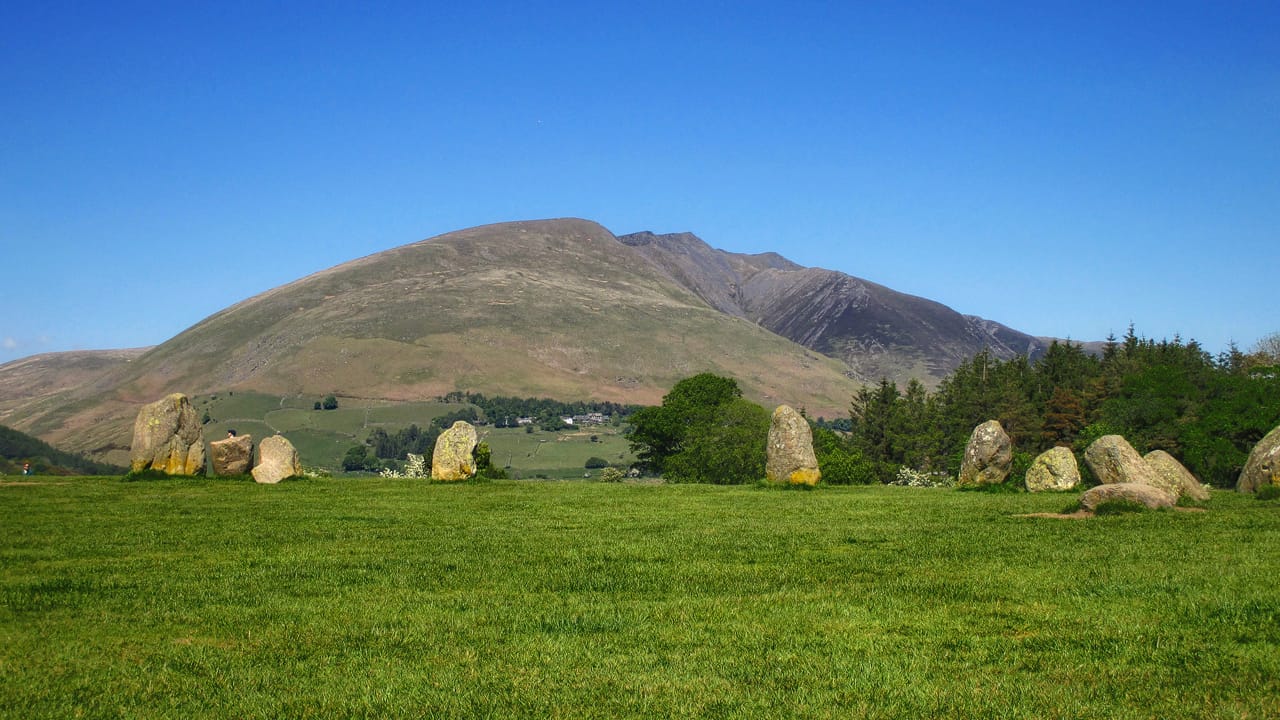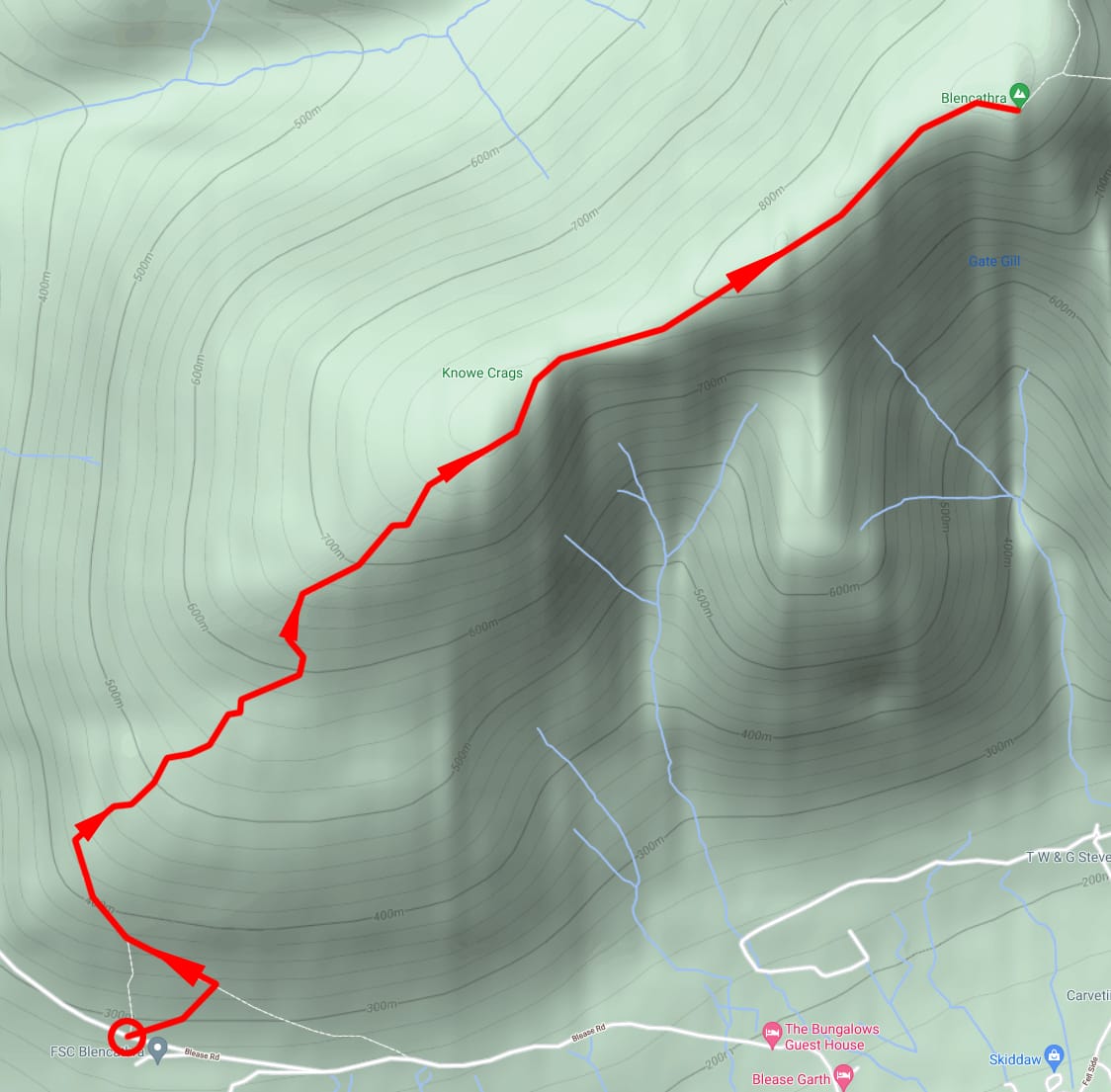Cumbric is an ancient Brittonic language, related to Old Welsh. That’s why there is a similarity between the name Blencathra and Welsh places like Blaenau Ffestiniog. Here, blen and the modern Welsh blaen both mean “summit, top”. Cumbric went extinct in the 12th century after the Kingdom of Strathclyde folded into the Kingdom of Scotland.
Cumbric survives in place names around Cumbria and northern England, such as in Carlisle and Penrith. Also, the ancient sheep-counting numbering system (yan, tyan, tethera etc.) probably originates from Cumbric.
Blencathra’s industrial and farming heritage
Like other Lake District fells, Blencathra has seen centuries of sheep grazing activity.
Less known is Blencathra’s industrial and mining heritage. Back in the late 19th and early 20th centuries, the fell was the site of several mines. The main one was Threlkeld Mine & Quarry, located near the base of Hallsfell. Operations ran for around 50 years between 1879 to 1928, mining zinc and lead ores. A Mr. H. Harkewitz opened the quarry to supply railway ballast to the Penrith–Keswick line. Track ballast is the loose rocky trackbed upon which railway lines and laid down.
Near the turn of the 20th century, demand had risen and the quarry was outputting 80,000 tons a year. The quarried stone was used for, and by, a variety of schemes, including construction of the Thirlmere Reservoir by the Manchester Corporation.
Nowadays Threlkeld Quarry has transformed into a museum for public enjoyment.
Blencathra: a mountain up for sale
In 2014, something rather unusual happened in the Lake District: a mountain went up for sale.
You see, Blencathra is owned by the 8th Earl of Lonsdale, Hugh Clayton Lowther, part of the ancient Lowther family and heir of the Lowther Settled Estates. The Lowther family have been major landowners in Cumbria since 900AD. The fortunes of the Lowthers has waned since the 20th century. Even so, the current Earl of Lonsdale still owns around 5,000 acres of land, Blencathra included.
In 2014, the Earl announced that he was listing the mountain, as well as the Lordship of the Manor of Threlkeld, for sale. The guide price was £1.75 million. This was to settle an inheritance tax bill.
This news immediately stirred the minds of the public and press alike. A community group soon formed called the Friends of Blencathra. Their goal was to raise enough funds to make a bid for the mountain, keeping the land out of private interests. Another major Lake District landowner, the National Trust, supported the group’s plans and decided not to bid.
By November 2015, the mountain was no longer on the market. By that point, Friends of Blencathra had only raised £246,650 despite wide public support. In May 2016 Blencathra was officially withdrawn from sale after the Earl had identified other means of settling his tax bill.
The Friends of Blencathra group began winding up operations and returning donations. The remaining funds raised that couldn’t be returned were donated to five local charities, and the group ceased to be in 2019.
Who knew one could own a mountain, never mind sell one?
Blencathra walks and routes
There are many ways to skin the proverbial cat and summit this popular mountain.
Before we detail these routes and ascents, though, we must be responsible people.
Before tackling any of these ascents, you must ensure you have the necessary equipment and knowledge. That means:
- a solid pair of walking boots;
- a paper OS map of the route;
- a compass (and you know how to use it in reference to the map);
- adequate outdoor clothing for the current and expected weather conditions;
- supply of water and food.
Let close friends or family know what time you’ll be setting off on the walk and what time you expect to return.
For checking specialised weather in the area, we can recommend:
If you are unable to call 999, you can text the emergency services. You’ll need to set it up in advance, find out how to do so here.
One of the easiest ways to communicate your precise location is to use What3Words. What3Words divides the world into 3x3 metre squares, and gives each square a unique and memorable three-word name. Easier to remember and communicate compared to a random string of numbers!
If you’re facing problems on Blencathra, call the emergency services and ask for Keswick Mountain Rescue.
All that being said… here’s some ascents of Blencathra.
1. Via Sharp Edge: the way of the thrill seeker
Helvellyn isn’t the only mountain in the Lake District with vertiginous ridges. Blencathra has one too, known appropriately as Sharp Edge. Alfred Wainwright himself, when detailing this route, noted that “The crest itself is sharp enough for shaving (the former name was razor edge) and can be traversed only à cheval at some risk of damage to tender parts.” That’s putting it mildly!
This route is not for the fainthearted. We don’t recommend tackling this during the colder months unless you are already vastly experienced and skilled in mountaineering.


















